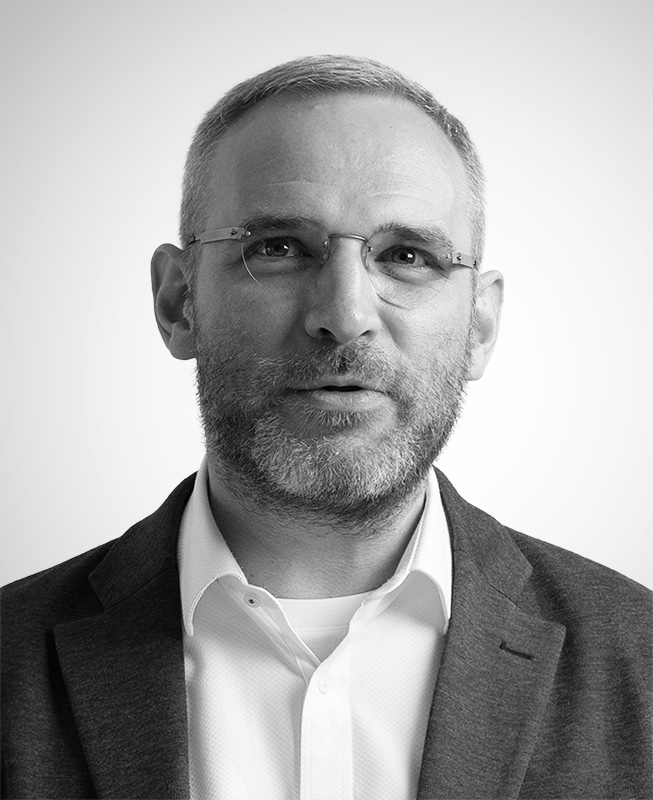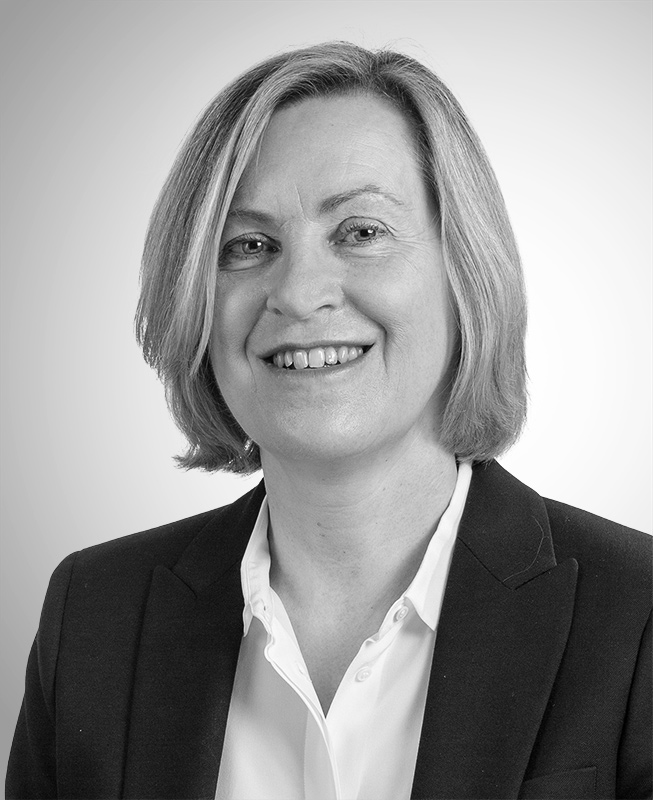2023 – the year the UPC finally came into being
After a long gestation, 2023 was the year the UPC finally opened its doors and started to deal with cases. In this overview we summarise the cases filed in 2023 and flag some points to look out for in 2024.
On 21 December 2023 the UPC issued its own statistics of cases filed at UPC since it opened for business on 1 June 2023, available here. As previously reported, not all cases filed are visible on the CMS to third parties so while those statistics refer to 160 cases (including one filed only in hard copy) the discussion below covers the 147 cases filed in 2023 for which we can view details as at 31 December 2023. These include 65 infringement cases, 24 revocations, 7 provisional measures, 3 preservation of evidence, 1 inspection request and 1 request for declaration of non-infringement. There are also 46 counterclaims for revocation. Where there are multiple defendants to an infringement action and each files a counterclaim for revocation these are recorded as separate cases and so swell the overall numbers. A breakdown of cases (excluding counterclaims) is shown in Figure 1
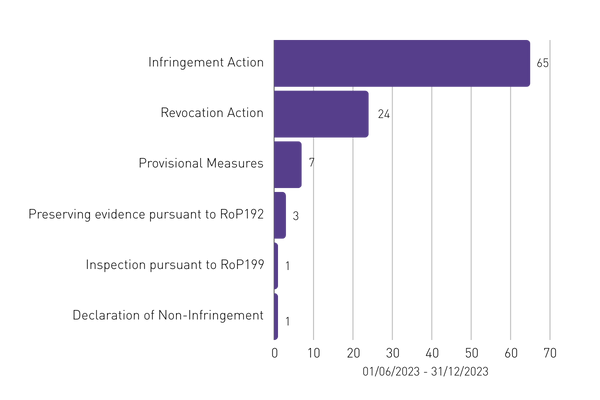
Figure 1 - number of cases filed
Infringement actions
As shown in Figure 2 the most popular location to file an infringement action was Munich local division with 23 cases and with the overwhelming majority filed across the four German local divisions, 47 of 65 cases.
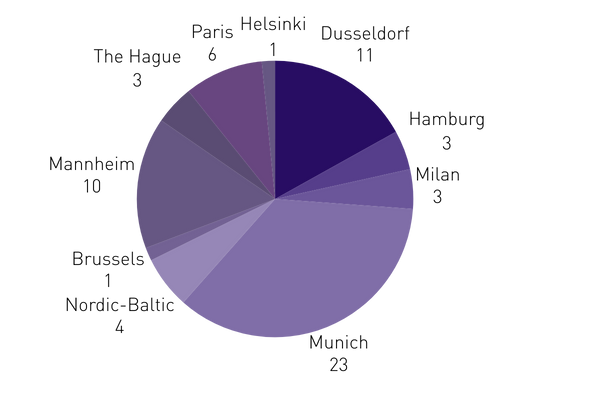
Figure 2 - number of infringement actions by division
The most prolific individual filer was Panasonic Holdings Corporation (12 cases) which brought 6 actions each against Oppo and Xiaomi. Other multiple filers were Abbot Diabetes Care Inc. (4 cases), Dexcom Inc. (4 cases), Edwards Lifesciences Corporation (3 cases), Fujifilm Corporation (3 cases) and Ocado (3 cases, now settled). Figure 3 shows details of claimants that filed two or more cases.
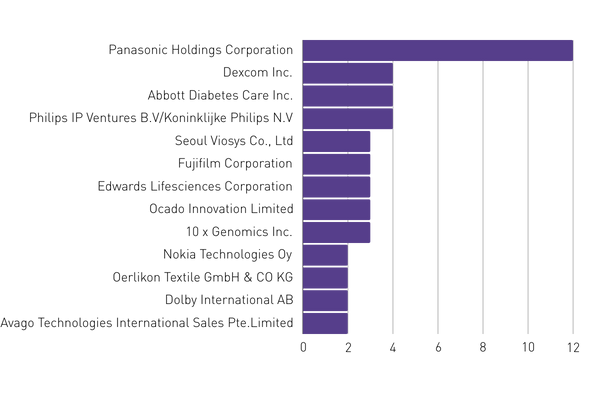
Figure 3 – number of cases by claimant
Language in infringement actions
In the first month of operation all the infringement cases filed in German local divisions were filed in German which is not surprising as the possibility of filing in English in German local divisions was not announced until the court opened its doors on 1 June. However, nine of the 36 cases filed in German local divisions since July have been filed in English even though the representatives for those cases are themselves German. Further, the parties in the Amgen v Sanofi infringement action UPC_CFI_14/2023 have agreed, with the consent of the judges, to change the language of proceedings to English, order here. And in Plant-e v Arkyne the court in The Hague ordered a change from Dutch to English in the face of opposition from the claimant, report here. In another three cases before Mannheim local division between Panasonic v Oppo the court refused to change the language from German to English at request of defendant. These three decisions have been appealed and it will be interesting to see what factors the appeal court will consider most relevant when making its decisions whether or not to order change of language from German to English.
Figure 4 shows the language breakdown for infringement actions as filed, before any subsequent changes. Of the 65 infringement cases, 38 were filed in German with English second favourite with 18 cases and 3 each in French, Italian and Dutch.
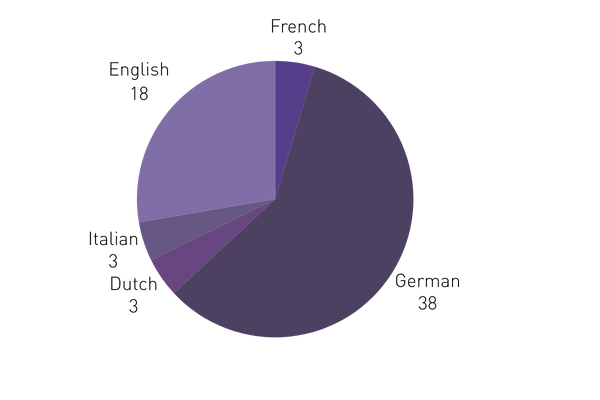
Figure 4 – language of infringement actions
Value of infringement actions
When filing an infringement action the claimant has to provide an estimate of the value of the case. The court fee is then based on that value. This means we have an indication of which cases are lower in value. While this is not determinative of size of claimant it serves as a rough proxy for usage of the court by SMEs.
Of the 65 infringement cases, 10 are valued at 500,000 EUR or less with a further five cases valued between 500,000 and 750,000 indicating reasonable initial interest in enforcing lower value cases before the UPC.
At the other end of the scale, 13 of the infringement actions are valued at 5,000,000 EUR or more, with the Amgen v Sanofi action being valued the highest at 100,000,000 EUR.
Revocation actions
Of the 24 revocation cases, 20 were filed in Paris central division and four in Munich central division (two of which were later transferred to Paris). This reflects the current subject matter split of the patents concerned. Paris currently deals with patents relating to international classifications A, B, D, E, G and H while Munich deals with C and F.
The new Milan central division is expected to be up and running around June 2024. It will take over responsibility for patents relating to international classification A, human necessities, apart from those involving SPCs all of which will be dealt with by Paris. Decision here.
The overall number of revocation actions was swelled by the filing of nine revocations by NJOY Netherlands BV against patents relating to vaporizers used in vaping products.
Provisional injunctions
Not all of the provisional injunction cases we know have been considered are publicly visible on the CMS. Of those we are aware of, injunctions have been granted in two cases: myStromer v Revolt in Dusseldorf local division, report here and 10X Genomics v Nanostring in Munich local division, report here, the latter of which has been appealed.
In a further four cases provisional injunctions have been refused for one reason or another: a second 10X Genomics v Nanostring case (Munich local division) was refused partly because of delay, report here; Aim Sport Vision v Supponor (Helsinki local division) was refused for technical reasons arising from previous opt out, report here; Cup&Cino Kaffesystem-Vertrieb v Alpina coffee systems (Vienna local division) where court took the view there was not infringement, report here; and SES Imotag v Hanshow Technology (Munich local division) where court also took view there was not infringement, reported here.
Appeals
So far, we can see details of 11 appeals that have been filed. The first concerned clarifying the date of service of proceedings where annexes were provided subsequently and is reported here. The second is Nanostring’s appeal against the provisional injunction obtained by 10X Genomics which was heard on 18 December 2023, decision awaited.
There are also some pending procedural appeals in the NJOY cases, appeals about change of language mentioned above and an appeal about access to documents is discussed below.
Bifurcation
Dusseldorf local division has made available three orders, 22 November 2023, 1 December 2023 and 19 December 2023 in which it has ruled that it will hear both infringement and counterclaim for revocation together locally in accordance with its discretion under article 33(3) rather than bifurcating by sending the revocation action to the central division or by sending both actions to the central division (which it could do with consent of the parties).
We are not aware of decisions showing the approach of other divisions to this but it is likely to be similar.
Access to documents
On the CMS we can see 12 requests for access to documents under Rule 262.1(b) which provides that the there shall be public access to:
“written pleadings and evidence, lodged at the Court and recorded by the Registry shall be available to the public upon reasoned request to the Registry; the decision is taken by the judge-rapporteur after consulting the parties.” [Emphasis added.]
Of these requests, three have been refused (two by Munich central division and one by Milan local division) while a request to Nordic Baltic regional division was permitted (see reports here and here). The order permitting access has been appealed by the claimant, Ocado, and the Court of Appeal granted suspensive effect so that access is deferred until after the full appeal has been heard, order here.
This appeal is of wide relevance and we await with interest the approach the Court of Appeal will take, noting that there is a difference in national approaches between countries which traditionally allow access to pleadings and evidence from court cases (such as Sweden and common law countries) and countries which have a tradition of not allowing such access (Germany, Netherlands).
There has already been one application to intervene in the appeal and the claimant and defendants are being given an opportunity to comment on this in line with Rule 314 RoP. The court will also consider whether the intervenor should be treated as a party per Rule 315.4 RoP, order here.
The factual background to this particular access request does have some unusual features. First, the main proceedings have already concluded following a settlement between the parties, the access request itself having been made after the settlement but before the formal conclusion of proceedings. Secondly, four of the eight defendants were not served with the claim before the conclusion.
A further point of interest on which the appeal court has invited the parties to comment is whether the applicant for access to documents, a member of the public who is a UK solicitor and not on the register of UPC representatives, can represent himself at the appeal or whether he would need to be represented as is required by Rule 8 RoP for parties.
Unitary Patents
The European Patent Office maintains a dashboard with statistics related to Unitary Patents. From a review of the statistics presented, a few notable points emerge.
First, from the “Evolution of requests received” chart presented below (data as at 4 January 2024), a spike of unitary patent requests can be seen in July 2023. This is expected, as the first patents granted for which a unitary patent could be requested, were granted on 7 June 2023, and the deadline to request unitary effect is one month later, 7 July 2023. Moreover, from January 2023 applicants were able to request delayed grant of a European patent (for applications where the Communication under Rule 71(3) EPC had issued) in order to be able to request unitary effect, thus creating a backlog of eligible patents. What is perhaps more remarkable is that following this spike around the time that the system started, the number of requests for unitary effect filed per month has remained fairly stable and at a level not much below that in July. This suggests an ongoing and sustained interest in the unitary patent as an alternative to national validations of a European patent in the participating countries.
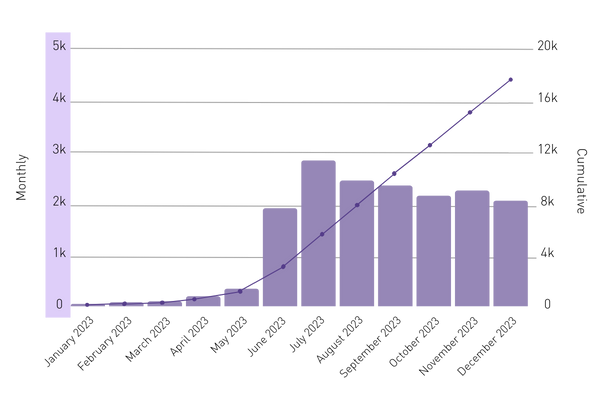
Evolution of requests received
Secondly, the interest in the unitary patent is quite unequal around the world. The number of requests coming from applicants in USA and Germany is noticeably higher, while the number from Japan, Korea and China, for example, is noticeably lower.
There is a presentation of the technology fields of the patents to which the requests for unitary effect relate. It is hard to analyse this, but most fields appear to be well represented. Similarly, the top users of the unitary patent system represent a diverse range of patent filing companies.
Written by Joanne Welch, Darren Smyth and Alona Andrieieva
